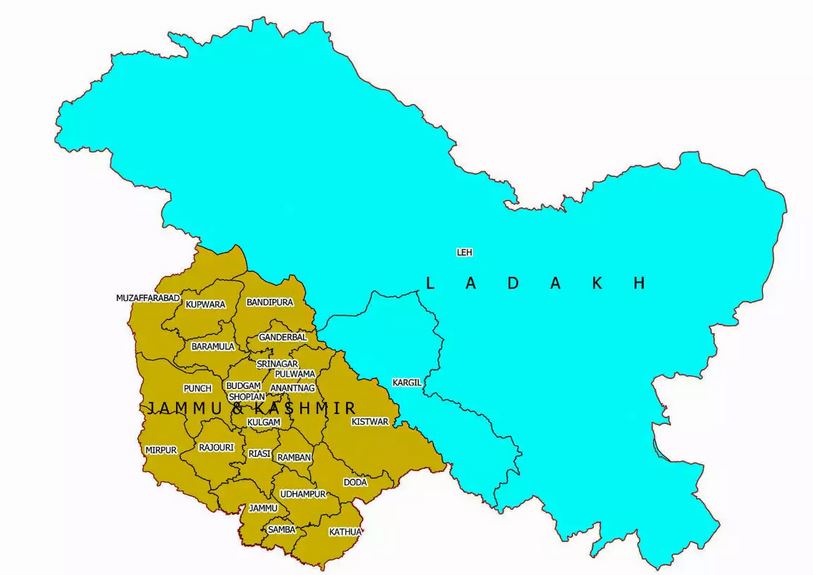- A recent shutdown and protest demonstration in Ladakh urged that the newly constituted Union Territory (UT) be granted statehood and included in the Constitution’s Sixth Schedule.
- This underlines a bigger issue of regional governance and autonomy.
The Centre’s offer to Ladakh representatives
- Includes Article 371-like protections. The MHA promised to extend Article 371-like protections to Ladakh, answering concerns voiced by the Leh Apex Body (ABL) and the Kargil Democratic Alliance (KDA).
- Exclusion from the Sixth Schedule: While noting concerns, the administration chose not to include Ladakh in the Sixth Schedule, showing a different approach to regional issues.
Background about Ladakh’s Governance
- Following the repeal of Article 370, the region was recognised as a Union Territory. Following the abolition of Article 370, Ladakh was recognised as a separate Union Territory “without legislature,” similar to UTs such as New Delhi and Pondicherry.
- Demand for Sixth Schedule Inclusion: Organisations such as ABL and KDA have lobbied for Ladakh’s inclusion in the Sixth Schedule, citing a desire for greater autonomy in governance.
What is the sixth schedule?
- Article 244 of Part X of the Constitution establishes a unique management structure for’scheduled regions’ and ‘tribal areas.’
- The Fifth Schedule addresses scheduled territories and tribes in states other than Assam, Meghalaya, Tripura, and Mizoram (ATM2).
- The Sixth Schedule concentrates on the tribal areas of these four northeastern states.
Salient Features of Sixth Schedule:
(1) Autonomous Districts
- Tribal regions are designated as autonomous districts under the state’s administrative authority.
- The governor has the authority to organise and re-organize these districts, including boundary adjustments and separation into autonomous areas.
(2) District and Regional Councils:
- Each district council consists of 30 members, both nominated and elected.
- Regional councils do exist inside autonomous regions.
- These councils administer the territories under their control, passing laws on specific issues with the governor’s approval.
- They can form village councils or courts for dispute resolution, with specific competence over appeals.
- District councils oversee a variety of infrastructure and services in local communities, including education and healthcare.
- They also have the authority to levy taxes and control specific activity.
(3) Laws Exemptions and Modifications:
- Acts of Parliament or state legislatures may not apply immediately or only with changes.
- Depending on the region, the president or governor has the authority to direct this situation.
(4) Governor’s Authority:
- The governor may appoint a commission to investigate and report on issues affecting autonomous districts or regions.
- He or she has the authority to dissolve a district or regional council based on commission recommendations.
Tribal areas under the Sixth Schedule
- Include Assam’s North Cachar Hills District, Karbi Anglong District, and Bodoland Territorial Areas District.
- Meghalaya’s districts include Khasi Hills, Jaintia Hills, and Garo Hills.
- Tripura: Tribal Areas District.
- Mizoram’s districts include Chakma, Mara, and Lai.
Reasons for Demands in Ladakh: Cultural autonomy
- Tribes of Assam, Meghalaya, Tripura, and Mizoram have diverse cultures, rituals, and civilizations. Unlike tribes in other regions of India, they have not assimilated well into the majority population.
- Meeting tribal aspirations: The Parliamentary Standing Committee suggested that Ladakh be included in the Sixth Schedule because tribal communities make up 79.61% of the total population.
- Autonomy and self-governance: Extending the Sixth Schedule to Ladakh could provide local tribal tribes more autonomy and control.
- Cultural preservation: It could also help to safeguard local populations’ distinct cultural identities as well as their traditional rituals and customs.
Challenges presented by this requirement
- Fragmentation: Some claim that extending the Sixth Schedule to Ladakh would further split the territory and create additional administrative issues.
- Loss of political capital: There are also concerns about how the demand would affect the region’s political and administrative structures.
Conclusion
- While MHA’s decision falls short of Sixth Schedule inclusion, it shows a commitment to balance local authority with national governance interests.
- If enacted, it would be the first time that unique measures for a Union Territory have been introduced, perhaps setting a precedent for future governing arrangements in such regions.
Source: https://indianexpress.com/article/explained/explained-politics/ladakh-article-371-and-the-sixth-schedule-of-the-constitution-9199902/#:~:text=This%20Schedule%20contains%20provisions%20regarding,power%20to%20administrate%20tribal%20areas.

